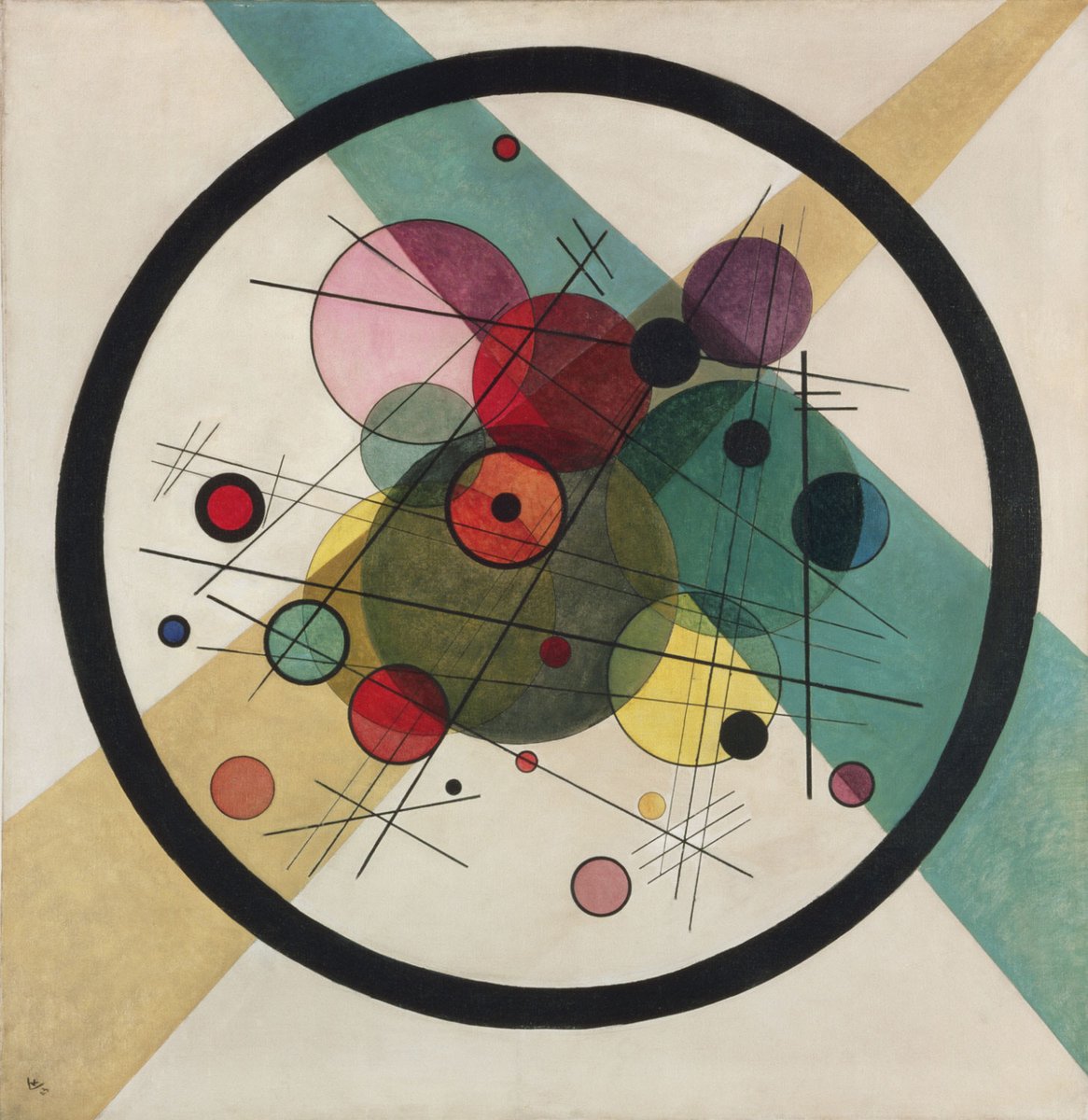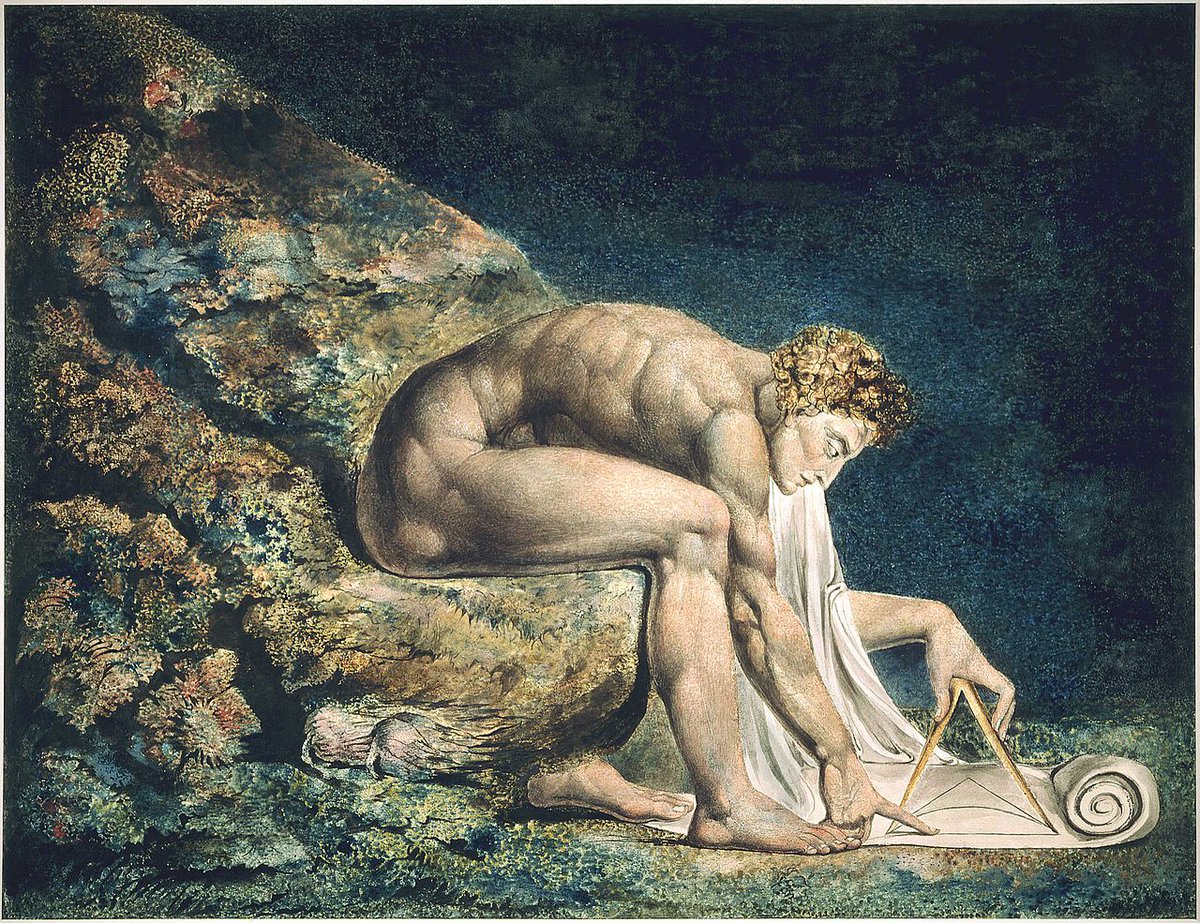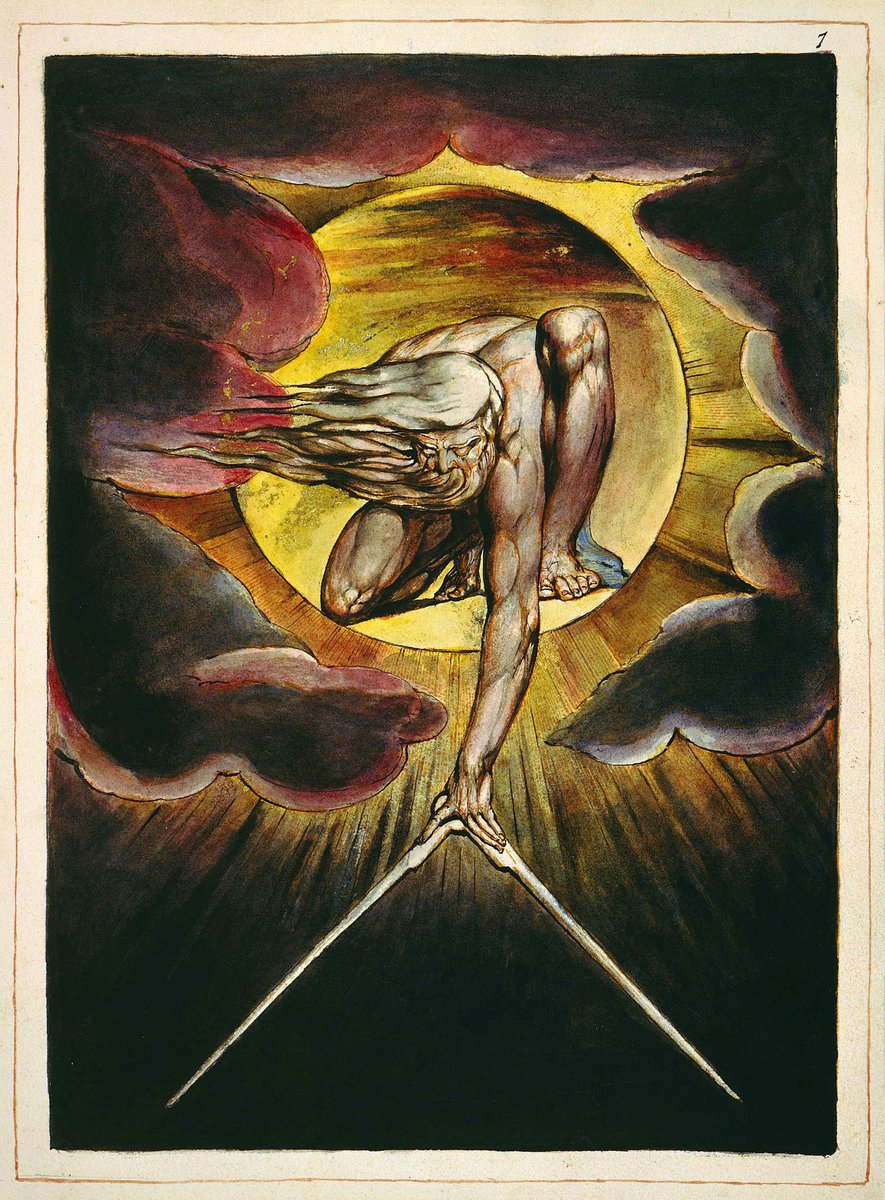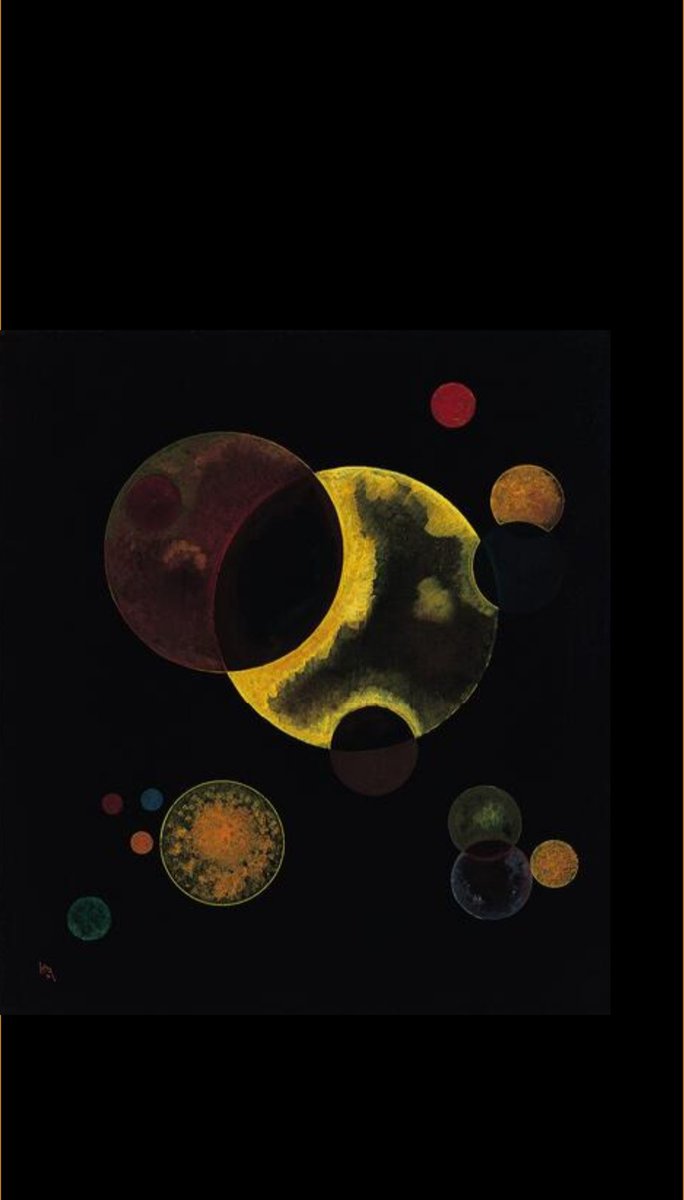“What is that which always is and has no becoming, and what is that which is always becoming but never is?"
- Plato, Timaeus 27d
- Plato, Timaeus 27d
Vasily Kandinsky- Circles in a Circle, oil on canvas, 1923 [1]
Plato’s Cosmology in the Timaeus:
The Forms vs. the Cosmos
The world of being (forms), everything in this world “always is,” “has no becoming” & does not change.
Physical world (Cosmos) is the world of becoming; everything comes to an end & passes away, but never really is.
The Forms vs. the Cosmos
The world of being (forms), everything in this world “always is,” “has no becoming” & does not change.
Physical world (Cosmos) is the world of becoming; everything comes to an end & passes away, but never really is.
William Blake- Newton (1795), colour print with pen & ink and watercolour. [1]
To Plato, the truth in the Forms could be glimpsed, that is apprehended by our searching rational intellect because it is intelligible (mathematics) yet it cannot be understood by our subjective sense-perception or opinions [2]
Plato then argues the creation of the universe, was molded after the eternal Forms by a dēmiurgós or "divine craftsman" as "everything that is created must be of necessity be created by some cause." Yet this dēmiurgós can only create an imperfect, perishable copy of the Forms.
William Blake- The Ancient of Days, 1794, relief etching with hand coloring [1]
Plato& #39;s dēmiurgós though a divine artist is not omnipotent & certainly not the ultimate ground of Being and Creator as the dēmiurgós himself & the cosmic raw material from which he craftes the universe are both consequences of an ineffable Being, beyond form & words [1]
According to Plato, when the dēmiurgós created the universe, he also created time, that is "a moving image of eternity"
Vassily Kandinsky- Heavy Circles, 1927, Oil on canvas [1]
The changing cosmos cannot be eternal, as a changeless Form is, since once it comes into being it becomes a species of time. For Plato explains,"Time, came into existence along with the heaven, to the end that having been created together they might also be dissolved together [1]
This is the link if you would like to read the & #39;Timaeus& #39; by Plato, a dialogue written 360 BC. Translated by Benjamin Jowett.
http://classics.mit.edu/Plato/timaeus.html">https://classics.mit.edu/Plato/tim...
http://classics.mit.edu/Plato/timaeus.html">https://classics.mit.edu/Plato/tim...
To finish this thread: "Clocks and Clouds" [1972] by György Ligeti, a cosmological & mystical piece for 12-part women& #39;s chorus and orchestra. A fitting soundtrack to Plato& #39;s cosmology in the Timaeus. Enjoy! https://youtu.be/yfVnazeA3zw ">https://youtu.be/yfVnazeA3...

 Read on Twitter
Read on Twitter





